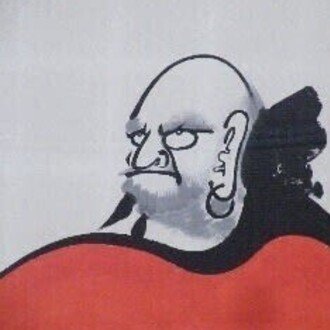
神の領域の入口「鳥居」の小噺。 The entrance to the god's realm, "Torii".
ここ十年、日本文化に興味をもち海外から訪れる観光客を含め、神社にお参りする人が増えている。
神社の境内は神の領域とされていることから、パワースポットとして女性たちに人気が高いようである。
In the last decade, more and more people are visiting the shrine, including tourists from overseas who are interested in Japanese culture.
Since the shrine grounds are considered to be the realm of God, it seems to be popular among women as a power spot.
その神の領域の入口として建てられているのが「鳥居」。鳥居をくぐる際は、一礼してから立ち入るのが一応礼儀となっている。
The "Torii" is built as the entrance to the area of God. When you go through the torii, it is a courtesy to bow in and enter.
その鳥居にはいろんな種類がある。関心を寄せる人は少ないと思うが、知ると神社への関心がより深まり、ご利益を授かる(?) かも。また、今回、神社シリーズの投稿を新たに予定にしているので、その前段として紹介させていただいた。
There are various types of torii gates. I think that few people are interested in it, but if you know it, your interest in the shrine will be deeper and you may receive a benefit (?). In addition, I am planning to post a new series of shrines this time, so I would like to introduce it as the first stage.
大別すると神明系と明神系の2系統があり、神明系派は鳥居の最上部が真っすぐで、明神系の方は弓形で、装飾性が強いようである。イラストにあるように、伊勢神宮、靖国神社は神明系にあたる。一方、明神系はよく見かける鳥居ではあるが、その中で、少し珍しい鳥居がある。例えば、広島 厳島神社の鳥居は「両部鳥居」といい、奈良 大神神社は「三ツ鳥居(三輪鳥居)」という。
There are roughly two types, Shinmei and Myojin, and the Shinto sect has a straight top of the torii gate, while the Myojin is bow-shaped and seems to be highly decorative. As shown in the illustration, Ise Jingu and Yasukuni Shrine are Shinmei type. On the other hand, the Myojin type is a commonly seen torii gate, but there is a rare torii gate. For example, the Torii of Hiroshima Itsukushima Shrine is called "Ryobu Torii", and the Nara Omiwa Shrine is called "Mitsu Torii (Miwa Torii)".
先日、訪ねた大阪の坐摩神社が、この三ツ鳥居である。その理由は不明だが非常に興味深いものであった。ただ、資料を調べていくと、イラストにあるように、大きな鳥居の左右に一回り小さい鳥居がくっついており、4本の柱で支えられている形になっている。
The Zama Shrine in Osaka I visited the other day is this Mitsu Torii. The reason is unknown, but it was very interesting. However, when I look into the materials, as shown in the illustration, a small torii is attached to the left and right of the large torii, and it is supported by four pillars.
坐摩神社の三ツ鳥居は、「三泉」を象徴しているという人もいる。坐摩神社のご祭神は「坐摩大神」で、「生井神(生命力のある井戸水の神)」、「神井神(幸福と繁栄の井戸水の神)」、「綱長井神(深く清らかな井戸水の神)」、「波比祇神(屋敷神・庭の神)」、「阿須波神(足の神・旅の神)」 の五柱を総称して坐摩神社という。その中の「三泉」から三ツ鳥居になったということが文献に記してあった。
Some people say that the Mitsu-torii of Zama Shrine symbolizes "Sansen." The god of the festival at Zama Shrine is "Sama Ogami", which includes "Namai God (god of well water with vitality)", "Kami God (god of happiness and prosperity well water)", "Tsunanagai God (deep and clean well water). The five pillars of "God of God", "Hahikino God (God of Yashiki and God of the Garden)" and “Asunami God (God of Foot and God of Travel)" are collectively referred to as Zama Shrine. It was noted in the literature that "Sansen" was changed to Mitsu Torii.


調べれば調べるほどド壷にはまりそうなので、ひとまず終えた。資料の中に、思いもよらない大発見(?) があった。一つ披ろうすると、知っている人は今さらとおっしゃるかもしれないが読み流してください。
飲料メーカー大手「サントリー」の社名の由来。創業者の鳥居信治郎氏は、奈良 大神神社の熱心な氏子だった。この大神神社の鳥居は、前述したように「三ツ鳥居」。 “ツ” を省くと「三鳥居」となる。それをカタカナで表示し「サントリー」と命名された、という話しがあった。
The more I looked into it, the more I could fit in the pot, so I finished. There was an unexpected big discovery (?) In the material. Let me show you one thing, and someone who knows it may say it is now, so please read it.
The origin of the company name of the major beverage manufacturer "Suntory". The founder, Shinjiro Torii, was an avid son of Nara Omiwa Shrine. The torii of this Omiwa Shrine is "Mitsu Torii" as mentioned above. If you omit "tsu", you will get "three(sun) torii". There was a story that it was displayed in katakana and named "Suntory."
レポート & 写真 / 渡邉雄二
Reported & Photo by Yuji Watanabe
いいなと思ったら応援しよう!

